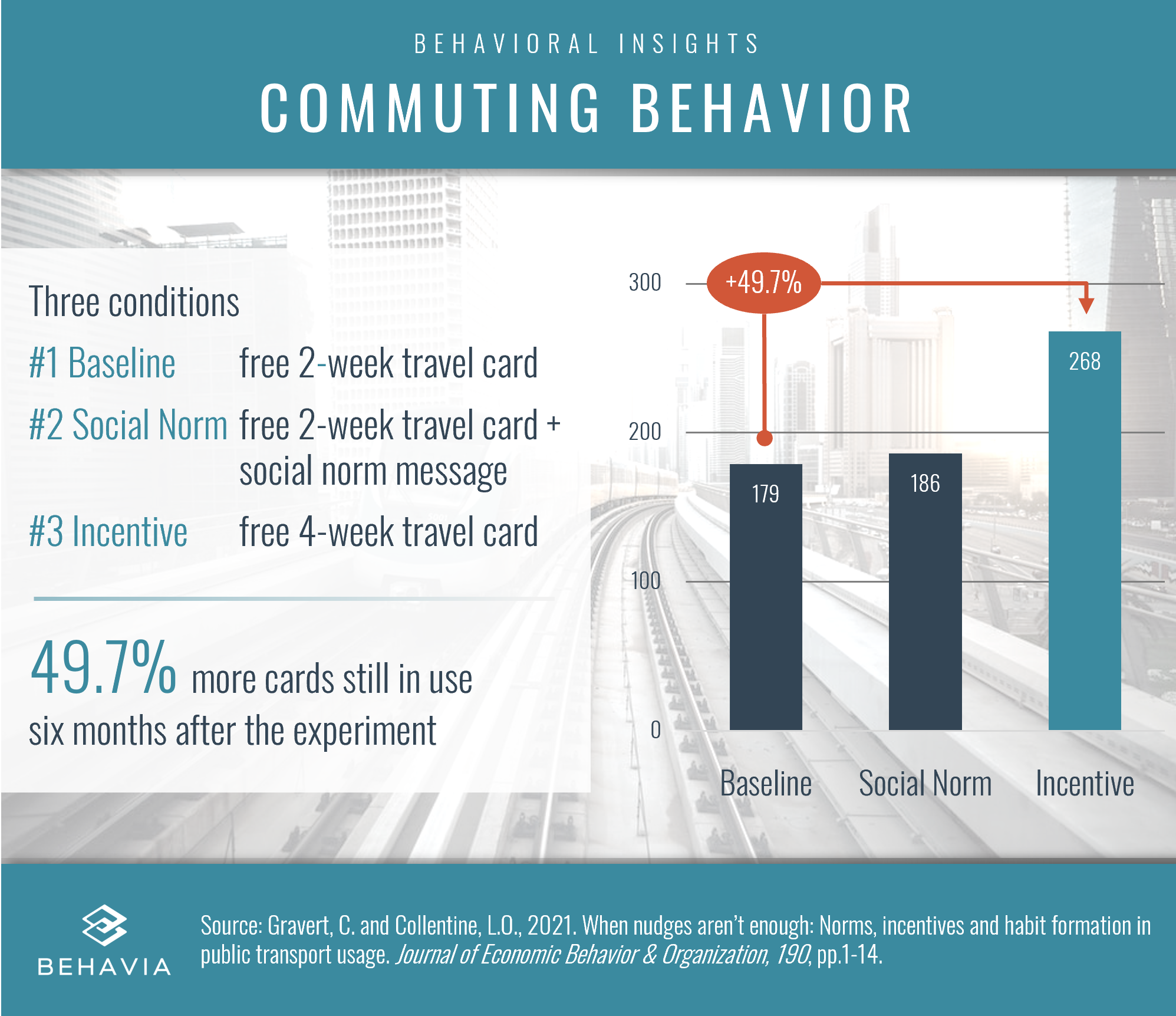Commuting Behavior

What is the most effective policy instrument to encourage long-term use of public transport? To answer this question, Gravert and Collentine (2021) collaborated with a local transport agency in Southern Sweden on a large-scale field experiment.
As part of a marketing campaign to promote the use of public transport, they compared the effects of three welcome offers on residents that recently moved to or within the region of Skåne:
- A two-week free public transport card* (baseline offer)
- A two-week free card* accompanied by a message like “72% of people in Skåne travel by public transport” (social norm)
- A four-week free public transport card* (incentive)
*All cards could be recharged and used after the free trial period.
The results showed that adding the social norm message had little to no effect compared to the baseline offer. Increasing the free trial period by two weeks, however, led to a lasting increase in public transport use: six months after the experiment, 49.7% more cards were still in use in the incentive condition compared to the baseline condition.
In this study, incentives worked best to encourage long-term use of public transport. Nevertheless, habit formation depends on a variety of factors. Field experiments can help decision-makers to determine the most effective policy mix to facilitate behavioral change in their communities.
Learn more about the experiment the original article: When nudges aren’t enough: Norms, incentives and habit formation in public transport usage – ScienceDirect